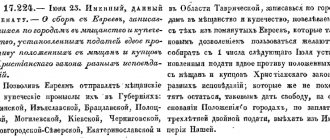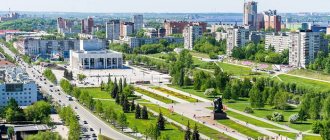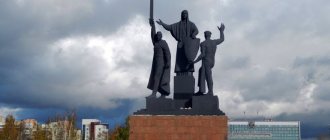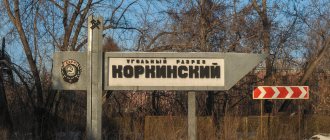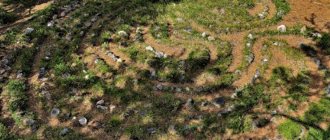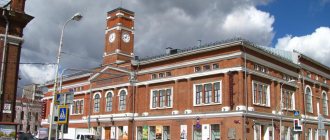Cherdyn is one of the oldest cities in the Urals. Arriving in Cherdyn, it’s like being transported into a time machine into the past. Walking along the local streets, it seems that you find yourself in the 19th or early 20th century. Here, like nowhere else in the Urals, many ancient buildings have been preserved. And in many ways, the way of life.
It is also often noted that Cherdyn, like Rome, stands on seven hills. “Ancient Rome lay on seven hills. Old Moscow settled on seven hills. By the same quirk of history, Cherdyn, the oldest city in the Urals, is located on seven hills of the right bank of the Kolva,” writes Professor G.N. Chagin. Each hill has a name: Vyatsky, Trinity, Resurrection, Epiphany, Monastyrsky, Posadsky and Starokladbishchensky.
The high coast of Kolva is dissected by deep ravines, which form several high capes. The churches of Cherdyn stand on them.
History of Cherdyn
The first settlement on this site arose in the 8th-9th centuries. In the 10th-15th centuries, on Trinity Hill there was a fortified settlement belonging to the Rodanian culture.
Since the 14th century, Cherdyn became the center of a territory called Perm the Great. But she changed her location several times. It is believed that this is already its third place, and before Cherdyn was in the place of Pyanteg and Pokchi.
Roads beyond the Urals passed through Cherdyn. It had large trade relations with other countries. In exchange for valuable furs, items made of silver were also brought here. This is how the legends about Zakamsky silver were born. The wealth of these places is clearly evidenced by numerous finds of treasures. Some of them can be seen in the Cherdyn Museum.
The exact date of the city's founding is unknown. The first written mention of Cherdyn dates back to 1451 (Vychegda-Vym Chronicle). Then Moscow Prince Vasily II appointed Vereinsky Prince Mikhail Ermolich as governor in Cherdyn. This year is officially considered the birth date of the city.
Fighters for Orthodoxy persuaded the residents of Cherdyn to embrace Christianity. In 1455, this attempt ended in failure for Bishop Pitirim - he was killed by the Voguls.
In 1462, Bishop Jonah founded the St. John the Theologian Monastery in Cherdyn and founded the wooden Church of St. John the Theologian.
In 1472, Perm the Great joined the Moscow state.
In 1505, a Moscow governor was appointed to Cherdyn, after which the population of the city became predominantly Russian.
In 1535, a wooden fortress was built on Trinity Hill. It was reliably protected on three sides by deep ravines, and on the fourth side a ditch and a high earthen rampart 130 meters long were built. The fortress rampart is clearly visible even now, striking in its size. The fortress withstood 11 major attacks by the Tatars and Voguls. In 1535 Cherdyn received official city status.
But in 1595, a shorter Babinovskaya road appeared through Solikamsk. Cherdyn found itself on the sidelines and its importance began to decline.
In 1781, Cherdynsky district was formed, which existed until 1923. Cherdynsky district was the largest in the Perm province, covering a vast territory with an area of 70,790 km2.
In 1783, the coat of arms of the city of Cherdyn was approved. The symbol of the city - the moose - can be seen in the form of an art object on the square in front of the bus station. Nowadays, a brand book for the city with a moose has also been developed.
In 1792 the city was badly damaged by a devastating fire. The fortress, churches, houses burned down. Only 35 buildings remain. Cherdyn merchants participated in the restoration of the city and allocated funds for the construction of new public buildings and churches.
In 1970, Cherdyn was included in the list of 116 historical cities of Russia.
Currently, the city's population is about 4.7 thousand people. This is one of the smallest cities in the country.
Cherdyn architectural monuments
Ancient Cherdyn was a city of wooden houses. Numerous fires destroyed almost all the old buildings, so most of the surviving architectural monuments date back to the 18th and 19th centuries, when stone construction began in the city.
House of merchant Remyannikov
- Address: st. Uspenskaya, 55.
The beautiful stone mansion of Semyon Remyannikov is located in the very heart of Cherdyn - on Uspenskaya Street. The two-story building in classical style was built in the 19th century. The house of the merchant family is connected by a stone passage gate to the shop in which Semyon Yegorovich sold shoes.
Before the Revolution, the estate also had outbuildings and a garden, but they were destroyed during the Soviet years. The Bolsheviks dispossessed wealthy owners and nationalized all their property. During the Soviet era, Gosstrakh worked in the architectural monument; today the building houses the registry office and the passport and visa service.
Women's gymnasium
- Address: st. Yurganovskaya, 60.
The building of the former women's gymnasium is easy to find on one of the central streets of the city - Yurganovskaya. The educational institution opened in the 1880s. Initially it was a two-year school, then it was transformed into a four-year gymnasium.
The school accepted girls from different classes. By 1908, the gymnasium already had 8 classes. Graduates worked as teachers in their hometown and other localities. After 1917, education again rose to a higher level, now the gymnasium was reformed into a pedagogical college.
During the Great Patriotic War, an evacuation hospital was located in the two-story building. Afterwards the building was given to a boarding school. Today, the architectural monument houses the exhibition hall of the Local History Museum.
Hospital building
- Address: Prokopyevskaya street.
Another famous architectural monument of the century before last is located on Prokopyevsky Street. The simple two-story hospital building became famous throughout the country thanks to its famous patient, the disgraced poet Osip Mandelstam.
The poet was exiled to Cherdyn for his sharp statements against the Soviet regime and the anti-Stalin epigram “We live...”. The exile morally crushed the writer; one day he could not stand the mental torment and tried to commit suicide by jumping out of a second-floor window. Years later, a plaque appeared on the building in memory of this event.
Water tower
- Address: Yurganovskaya st., 92.
The Cherdyn “water pump” is not just a practical structure, but also a beautiful example of engineering at the end of the 19th century. A huge octagonal tower with three floors was built in 1899 with charitable funds.
The author of the project was the outstanding engineer Alexander Gansberg. Initially, the red brick structure was topped with a wooden turret with a spire, but over time it was dismantled. It is noteworthy that the water supply system in Cherdyn appeared two years earlier than in the main city of the province - Perm.
In 1913, Sergei Prokudin-Gorsky, the most famous photographer of the Russian Empire, took color photographs of the town from the tower. The water tower served for more than a hundred years and only recently went to its well-deserved rest.
On topic: The most interesting places in the Perm region
Sights of Cherdyn
There are many worthy attractions in Cherdyn. I'll tell you about some of them.
Symbols on the diagram:
1 – Vyatka settlement and grove in honor of the 200th anniversary of the Romanov dynasty. 2 – Trinity settlement with a rampart, Ilinskaya Church, a tower and the “Polyudov trace”. 3 – Chapel of the Image Not Made by Hands 4 – Assumption Church (Museum of Faith), next to the outpost 5 – Resurrection Cathedral and Church of the Transfiguration 6 – Church of the Epiphany 7 – Church of St. John the Evangelist, ancient burials 8 – hospital where Osip Mandelstam was kept 9 – Exhibition Hall Museum of Local Lore named after. A.S. Pushkina 10 – Museum of Local Lore named after. A.S. Pushkina 11 – Bus station in Cherdyn.
Trinity Hill
This is where Cherdyn began. This is the heart of the city, its beginning. Back in the 12th-13th centuries, the Cherdynskoye (Troitskoye) settlement stood on this site. Archaeologists have found shards of pottery and bronze rustling pendants of the Rodanian culture.
Cherdyn with a wooden fortress appeared on the site of the ancient settlement in the 15th year. The earthen rampart is clearly visible here. It amazes with its volume. When you stop nearby, think about how much earth and how much effort it took to pour it by hand in those ancient times!..
Here, built into the shaft, there is a small exhibition reproducing the chain mail of those times, spearheads, figurines of the Permian animal style, and an ancient dish.
The wooden Church of Elijah the Prophet was built nearby. And on the edge of the hill, one of the towers of the fortress, Spasskaya, is reproduced.
Near it stands an improvised spear with a shield and a huge cobblestone with a huge human footprint carved on it. The trail is reproduced from what is on the top of the mountain Polyudov Kamen (Polyud). “When you stand on this stone, you need to grab the spear shaft with your hand, and follow the footsteps of the hero Polyud with your foot, and then part of his strength will always be with you,” the inscription says.
By the way, Polyud is perfectly visible on the horizon, beyond the Kolva River, resembling a giant frozen wave in shape. It is believed that when enemies approached, a signal fire was lit on Polyud, and Cherdyn was prepared for the appearance of enemies.
The Kolva River flows below. In the past, it was actively used by merchants as a waterway. On the banks of the river there were merchant barns and warehouses.
Vyatsky Hill
Next to Troitsky, a little to the south, is Vyatsky Hill. There was a Vyatka settlement here. Archaeologists have found the remains of metallurgical production, as well as a treasure with objects of the Permian animal style.
For the 200th anniversary of the Romanov dynasty, a grove was planted on the hill.
Temple of St. John the Evangelist
The oldest stone building in Cherdyn, erected in 1704–1718. It is interesting that the building was built by captured Swedish masons on the orders of the Tobolsk Governor-General, Prince Gagarin, who was passing through Cherdyn.
In 1751, Archimandrite Jonah of the St. John the Theologian Monastery baptized the last pagans of the Vishera region - the Mansi.
Inside the two-story church, an ancient iconostasis made by famous icon painters Dmitry and Grigory Fedorov has been preserved. This is one of three such iconostases that have survived throughout Russia.
Behind the fence, near the walls of the temple, ancient monuments and tombstones of the 19th century have been preserved over the burial places of prominent residents of the city.
Address: st. Mamin-Sibiryaka, 15.
Chapel of the Savior Not Made by Hands (or Chapel of the “Murdered Parents”)
Reminds me of those troubled times when enemies attacked Cherdyn. It stands over the grave of 85 Cherdyns who died in 1547 in a battle with the Nogai Tatars. The names of the victims are listed on the tombstone.
The inscriptions in Old Church Slavonic at the entrance read: “This chapel is consecrated in honor of the Holy Image of Gda Bg and Our Spess Isa Hsa” and “Built in memory of 85 soldiers killed in battle by the Nagai Tatars in 1547, the 6th day of the Genvar.”
The Spasskaya Chapel was lost during Soviet times and restored in 2007. Now it houses the Spasskaya Chapel Museum.
Cathedral of the Resurrection of Christ
It was built in 1750 and consecrated in 1754. Restoration is underway inside. The bell tower of the Resurrection Cathedral serves as the main high-rise dominant of the city. You can go up here and look at Cherdyn from a bird's eye view. The ascent takes place along a spiral metal staircase. In one place on the rail you can see the inscription “Demidova N.T. plant 1877."
Address: st. Mamin-Sibiryaka, 47.
The Resurrection Cathedral forms a single ensemble with the nearby Church of the Transfiguration .
Nearby is the building of the Epiphany Church (1751-1761). It lost its domes, but retained artistic ornaments on the walls. Nowadays there is a bakery here.
The Assumption Church (which now houses the Museum of the History of Faith) and the All Saints Church (1815-1817), which is in the cemetery in the northern part of the city, have also survived to this day
The Museum of the History of Faith in the Assumption Church is located at st. Uspenskaya, 59. Here you can see a collection of icons, church utensils, and learn about the churches of the Cherdyn region.
And in 2010, the chapel of the Archangel Michael, which stood above the pit of Mikhail Romanov, was transported from Nyrob to Cherdyn. There is a memorial stone in it, the inscription on which reads: “To citizens of all classes and ranks, through whose work and care the city of Cherdyn stands. Grateful descendants. 1451-2011". It stands in the park near the Museum of Faith and Outpost.
Interesting places in Cherdyn: where to take a walk in the city
In every corner of the small town you can feel the breath of bygone eras. Walking through the streets and surrounding areas, you can, as if walking through layers of soil, study different eras in the history of Cherdyn.
Semigorye
The sparsely populated town, like ancient Rome, lies on seven hills. Locals call the heights mountains. The names of the five hills are ecclesiastical: Trinity, Vsesvyatsky, Ascension, Monastyrsky, Epiphany. Each of these mountains, except Monastyrskaya, is named after the temple that was built on its top.
The Taiga and Vyatsky hills rise to the side. Trinity Hill is the cradle of Cherdyn; it was here that archaeologists discovered traces of the first settlement. Most city tours start from this hill.
Kolva River
- Coordinates: 60.401352, 56.492947.
Cherdyn stretches along the banks of the beautiful Ural River Kolva. Centuries ago, trading ships sailed along the river, and on the shore there was a lively trade in food and valuable furs. The river witnessed not only peaceful life, but also fierce battles.
So, in 1472, five kilometers from Cherdyn, near the village of Pokcha, a battle took place between the Moscow and Great Perm troops, which ended in the defeat of the local soldiers.
On the opposite side of the river, endless expanses of wonderful Ural nature open up. The winding Colva has a lively character, but near the city it becomes peaceful and calm.
Merchant streets
Uspenskaya and Yurganovskaya streets are the historical center of Cherdyn, where in distant pre-revolutionary times the city elite, in particular, wealthy representatives of the merchant class, settled.
The merchants Remyannikovs, Sandalovs, Suslovs, Butakovs, Golovins, Zyryanovs and other famous townspeople lived on Uspenskaya Street. There are entire estates with merchant mansions, trading shops and servants' houses here. Uspenskaya and Yurganovskaya run parallel to each other and look alike, like sisters.
Cherdyntsy has retained its pre-revolutionary names and partially restored the original appearance of the center: each architectural monument is marked with a special plaque, and some shops have signs in the pre-reform style, with the letter “Ъ” at the end of the word.
Trinity settlement
- Coordinates: 60.400720, 56.488921.
The ancient settlement on Trinity Mountain is the forefather of modern Cherdyn. The remains of the earliest buildings date back to the 12th century. In the 16th century, a Russian fortress grew on the banks of the Kolva. The first wooden Kremlin burned down in 1504, and the new city, built on the ashes, existed until the 18th century. An earthen rampart remains from the fort.
Excavations have been carried out on the hill more than once; the most successful was 2003, when archaeologists discovered more than 120 ancient household items: earrings, noisy pendants, metal arrowheads, coins, locks, fragments of dishes, tools. One of the most valuable finds is a bronze reliquary cross, created, according to scientists, in the 15th-16th centuries.
Vyatka settlement
- Address: Voskresenskaya street.
Another valuable archeological monument was discovered on Vyatsky Hill south of the Trinity settlement. The Vyatka settlement is the remains of an ancient settlement, the very original Cherdyn that was once the capital of Perm the Great.
The artifacts found indicate the large size and wealth of the ancient fortress. Among the relics are metal objects made in the so-called Perm animal style. In 1913, a grove was planted on the hill in honor of the 300th anniversary of the Romanov dynasty.
Literary Square
- Address: corner of Sobornaya and Yurganovskaya streets.
In 2015, an amazing square was opened in Cherdyn in honor of the local poetess Svetlana Volodina. Marble monuments in the form of open books on stands are placed along the edges of the round platform.
On one page there is an excerpt from a poem or a statement about Cherdyn, and on the adjacent page its author is depicted.
There are three books in total: one is dedicated to Svetlana Yuryevna, the other two were given to famous guests of the city - Osip Mandelstam and Dmitry Mamin-Sibiryak. There are comfortable wooden benches between the stone books and a large flower bed in the center.
Cherdynskaya outpost
- Address: corner of Sovetskaya and Uspenskaya streets.
At the entrance to the courtyard of the Assumption Church, visitors are greeted by a real outpost in the old style. The cramped wooden closet and barrier are painted in stripes of black and white. The outpost was recreated in the same place and in its original form; it was here that the trade route to Siberia ran until the end of the 16th century. Reconstruction took place in 2011.
How to get to Cherdyn?
Cherdyn is located in the north of the Perm region. GPS coordinates of Cherdyn (Trinity Hill): N 60º24.024´; E 56º29.219´.
You can get here by car through Perm, Berezniki, Solikamsk. There are regular buses from Perm to Cherdyn.
The distance from Perm to Cherdyn is 300 kilometers, from Yekaterinburg – 660 kilometers.
© Pavel Raspopov
UraloVed.ru
See also:
Old photos of Cherdyn
Cherdyn in literature
CM. Prokudin-Gorsky. My trip to Cherdyn
The abandoned world of the Cherdyn Mansi
The city of Cherdyn (Perm region) on the map:
Support Uraloved
Team Nomads
Cherdyn is a city in Russia, located in the north of the Perm region, on the right bank of the Kolva River . Together with the adjacent territory, it forms the Cherdynsky urban settlement and is the administrative center of the Cherdynsky district. Cherdyn is one of the oldest cities in the Urals and is included in the List of Historical Cities of Russia. Population - 4920 people (2010). The distance to the nearest railway station Solikamsk is 102 km, to the administrative center of the Perm region, the city of Perm, 308 km.
MONUMENTS OF GEOLOGY OF THE PERM REGION - HERE!
ATTRACTIONS OF THE PERM REGION - HERE!
GEOGRAPHY OF THE PERM REGION - HERE!
NATURAL MONUMENTS OF THE PERM REGION - HERE!
CAVES OF THE PERM REGION - HERE!
TREASURES OF THE PERM REGION - HERE!
ANOMAL ZONES OF THE PERM REGION - HERE!
Cherdyn city, Kolva river
Origin of the name The name of the city comes, according to the hypothesis put forward by A. S. Gantman, from two Komi-Permyak words: cher - “tributary” and dyn - “mouth”, that is, “a settlement that arose at the mouth of a stream.” According to another version, the name of the settlement was given by a small river located on the northern side of the city, which before the arrival of the Russians was called “Cher”, and the settlement located at its mouth was called “Cherdyn” (“dyn” in this case is translated from Komi-Permyak as “ a place near something"). The modern name of the river - Cherdynka - is secondary, given by the name of the city. In the scribe books of the 16th-17th centuries, in the sovereign's charters and other decrees, Cherdyn was called Perm the Great, identifying it with the name of the historical region.
City Cherdyn History
Foundation of the city There is no exact information about the date of foundation of Cherdyn. There are hypotheses according to which the city was originally located to the south, on the site of the village of Pyanteg. Later, Cherdyn allegedly moved north, to the area of the village of Pokchi, and then ended up in its modern place. Initially, on the site of Cherdyn there was a Cherdyn (Troitskoe) settlement, which is attributed to the Rodan culture. During its excavations, fragments of pottery and bronze noisy pendants of the 12th-13th centuries were discovered. The city of Cherdyn itself was founded on the site of the ancient settlement in the 15th century. The remains of wooden fortifications of the Russian Kremlin, discovered by archaeologists, date back to the 16th-17th centuries. It is believed that Cherdyn was the center of the historical region of Perm the Great, which in the 10th-12th centuries conducted extensive trade with the Volga Bulgars, Iran, Veliky Novgorod and the northern peoples (Ugra). During this era, Novgorodians maintained close trade and political relations with Perm, who followed the ancient trade route east along the tributaries of the Northern Dvina, reaching Kolva from the Vychegda. Cherdyn and another important village, Pokcha, located seven kilometers to the north, were founded on the high right bank of the Kolva near its confluence with the Vishera opposite Mount Polyud, the highest point in this part of the Ural Mountains. From here further south there was a route to the Kama and Volga, and east along the Vishera to Siberia. The Novgorodians received tribute from local residents (probably the name of Mount Polyud comes from polyudye, that is, tribute that was collected here for Novgorod) and counted the region among their administrative districts, but there is no data on the presence of a Russian population in Cherdyn until the end of the 15th century. Even the local princes, whom the chronicles call by Russian names and are listed among the relatives of the Verei princes from Muscovy, are now considered Permyaks by nationality. The economic and political importance of Perm the Great - Cherdyn reached its peak in the 15th century. In addition to furs, which were highly valued in Europe, the so-called Trans-Kama silver was concentrated in the Perm region, that is, highly artistic silver products of Sasanian Persia, Byzantium and Great Moravia, which had long flowed here along trade routes in exchange for furs; this silver constituted a significant part of the tribute paid by the Russian lands to the Golden Horde. Starting with Ivan Kalita, the Moscow princes tried to challenge the political dominance of Novgorod over the Perm region, but only Vasily the Dark managed to appoint his proteges to Cherdyn.
Cherdyn city, Kolva river
First mentions The most reliable information about Cherdyn dates back to the second half of the 15th century - the time when Perm the Great began to join the Grand Duchy of Moscow. The first description of historical events in Cherdyn found over the past five centuries is the Vychegda-Vym Chronicle, which begins to mention the city in 1451: In the summer of 6959, the Great Prince Vasily Vasilyevich sent to the Perm land the governor from the family of the Vereisky princes Ermolai and after him Ermolai and his son Vasily ruled the Perm land of Vychegotskaya, and his elder son Yermolai, Mikhail Ermolich, was sent to Great Perm to Cherdyn. And they should be in charge of the Vychegotsky volosts according to the charter, according to the charter. So the Great Perm princes became vassals of Moscow, but rebellious vassals. In particular, during the war between Moscow and Kazan in the 60s of the 15th century, they refused to participate in the campaign, but without the permission of the Grand Duke they entered into military alliances with their neighbors, the Vyatchans, against the Voguls (Mansi). Cherdyn did not break off its relations with Veliky Novgorod. After the war with Novgorod in 1471, which was followed by its final inclusion in the Grand Duchy of Moscow, Ivan III took advantage of certain insults inflicted on Moscow merchants in Cherdyn as a pretext for an invasion. In the spring of 1472, Moscow regiments under the command of the governor of Starodub, Prince Fyodor Pestroy, defeated the Perm army and captured Prince Mikhail Ermolaevich.
Cathedral of St. John the Theologian of the Theological Monastery
Baptism of Cherdyn In 1455, Bishop Pitirim made an attempt to “baptize the people of Cherdyn to the holy faith,” which turned out to be unsuccessful - Pitirim was killed by the Voguls, who actively resisted the adoption of Christianity. In 1462, Bishop Jonah undertook an “additional” (repeated, additional) baptism of Cherdyn residents. In the same year, the St. John the Theologian Monastery was founded in Cherdyn, at which the first Christian church in the Western Urals was founded - the wooden Church of St. John the Theologian. 1472-1535 In 1472, after the campaign of the Ustyug governor Prince Fyodor Pestroy to Cherdyn, the administrative center of Perm the Great was temporarily moved to Pokchu[6]. Prince Mikhail, taken to Moscow, expressed his submission to Ivan III and soon arrived back. His descendants reigned in Cherdyn and Pokcha until 1505, when the principality was abolished and a Moscow governor was appointed to Cherdyn. From this moment on, the population of Cherdyn and Pokcha became predominantly Russian, while the Permyak population survived only in certain villages and in the territories of the Komi-Permyak national district, located west of the river. Kama. In 1481, Cherdyn experienced an attack by the Mansi (Vogulichs), who failed to take the city. The Ustyug chronicle brings us information that in 1504 “the city of Cherdyn burned down and Prince Matthew Mikhailovich of Great Perm built a new city on Pochka.” In 1535, on the Trinity Hill of the city, under the supervision of a Moscow master, clerk Semyon Kurchov, a wooden Kremlin was erected, which survived eleven major sieges. In the same year, Pokcha burned down, and Cherdyn regained its status as the administrative center of Perm the Great. In addition, in 1535 Cherdyn was officially recognized as a city.
Church of the Transfiguration and Resurrection Cathedral
There is a known description of Cherdyn, compiled by governor Pyotr Nashchokin in 1613: the city of Cherdyn is wooden and there are six towers on the city, and the bridges and breaks on the city and on the towers have rotted and the roofs have collapsed, and the city has four gates, and the hiding place has collapsed; and in the city, along with a copper cannon of 12 spans in the machine, and the machine and wheels are dilapidated and thin. After the southern part of the Perm lands was allocated as a patrimony by Stroganov, the administrative center of the region also shifted to the south, and Cherdyn lost its former political significance. The economy of the region is developing mainly due to the development of deposits of table and potassium salts around the cities of Solikamsk and Berezniki, for the export of which barges were built in Cherdyn and Pokche until the beginning of the 20th century. The construction of railways was also limited to the southern part of the Perm region, and Cherdyn is currently connected to the regional center only by highways and river transport.
All Saints Cemetery Church City Cherdyn
Cherdyn and Pokcha still retain the appearance of ancient Russian towns with typical estate farms and do not have multi-story buildings. A significant part of the region's population adheres to Old Believer Christianity, although the churches are predominantly under the jurisdiction of the Moscow Patriarchate. Cherdyn is the center of distribution of unique wooden sculpture, which is generally uncharacteristic of the decoration of Russian churches. The origin of this custom is unknown; it is possible that it, like the custom of decorating church buildings with bulbs, was introduced many centuries ago from Scandinavia. The oldest sculptures that have survived to this day date back to the 17th century and are located in the Perm Art Gallery (Perm). Cherdyn is also known as the place of Osip Mandelstam’s first exile.
Population According to the results of the All-Russian Census of 2010, the population of Cherdyn was 4920 people, of which 2234 were men and 2686 women (45.4% and 54.6%, respectively). By national composition, the largest percentage among the city's residents are: Russians - 94.6%, Ukrainians - 1.4%, Tatars - 0.7%.
City of Cherdyn Local History Museum In 1899, a general education museum was opened in the city to commemorate the 100th anniversary of the birth of A.S. Pushkin. In the same year, an archaeological museum was created in the city. In 1918, both museums merged into one General Educational Museum named after A. S. Pushkin, which in 1922 received its modern name - Cherdyn Local History Museum named after A. S. Pushkin. The museum collection amounts to more than 110 thousand items. storage and includes the following collections: archaeological, Perm wooden sculpture, early printed and handwritten books of the 16th-18th centuries, collections of icon painting, ethnography, treasures of oriental coins. The museum has two branches: the Exhibition Hall and the Museum of the History of Faith.
Interesting facts In Russian historiography of the 19th century, the ancient Russian toponym Perm the Great was identified with the Scandinavian toponym Biarmia, the center of which was believed to be in the Cherdyn region. The main action of Alexey Ivanov’s novel “The Heart of Parma” takes place in Perm the Great, in Cherdyn and its environs. The second, author’s title of the novel is “Cherdyn - Princess of the Mountains.” The lives of famous writers are connected with Cherdyn: M. E. Saltykov-Shchedrin, D. N. Mamin-Sibiryak, Osip Mandelstam, Leonid Yuzhaninov and others.
Church of the Transfiguration and Resurrection Cathedral
CHERDYN TODAY It is pleasant to realize that strong threads of modernity stretch to the hoary antiquity and to the affairs of recently past years. More than 20 thousand sq. km stretches the territory of the Cherdynsky district, occupying almost the entire northern part of the Perm region. And the regional center of Cherdyn has a special place among the cities of the Urals. In 1970, Cherdyn was classified as one of the 116 historical cities of Russia. Without exaggeration, the city can be called a kind of open-air museum. More than 100 historical and cultural monuments are registered and protected here. Some of them are simply unique. The Cherdyn land holds many priceless relics. Some of them are known today throughout the world: Perm animal style, Perm wooden “gods”, unique icons...
Since 1947, targeted archaeological research has continued in the city and region. On Vyatka Hill, the remains of metallurgical production were found - copper and iron slags, as well as a storage pit filled with pottery shards, animal bones, and objects related to the Perm animal style. Trinity Mountain has always attracted the closest attention of archaeologists - not one of the expeditions carried out here has yet been without valuable finds. And now, in the summer of 2003, more than 120 finds were discovered in a small excavation area. A set of household items was found - external locks, arrowheads, knives, earrings, coins... a bronze reliquary cross dating back to the 15th-16th centuries occupies a special place among the finds. The city is implementing an eight-year program for a comprehensive historical and archaeological study of the Trinity settlement and turning it into a historical and cultural center. Trinity Hill is unique in that it is the only undeveloped historical site that can be used to recreate the ancient Kremlin. Far beyond the borders of the region, the local history museum named after. A.S. Pushkin, who is the pride of the city. In 1998 he turned 100 years old.
The Cherdyn region has amazing flora and fauna in its composition. Here you can find rare specimens of animals and plants. And the fame of the Divya Cave (its length is about 10 km), the mighty epic hero-stone Vetlan, the Kolva, Berezovaya, Kama and Vishera rivers, rich in fish, goes not only in our region, but throughout the country.
Cherdyn city
The oldest city in the Urals is becoming a famous tourist center in the Kama region. From Cherdyn they go on hikes to the Divya Cave, to the spurs of the Ural Mountains, and raft along the Berezovaya, Kolva, and Vishera rivers. And for those who have at least once walked along the Cherdyn taiga trails, the ancient names of the villages begin to sound completely different: Pokcha, Vilgort, Yanidor, Kamgort, Iskor, Nyrob, Kolva, Polyud... The Cherdyn region attracts many people of different professions, ages and generations . In recent years, it has turned into a place of mass tourism and pilgrimage, including guests from abroad.
The rich historical past of the area includes a developed network of folk arts and crafts. Wood carving and painting, patterned weaving, embroidery, knitting, weaving, metalworking and pottery production developed here. In order to revive old traditions, the municipal institution “Center for the Preservation of Folk Arts and Crafts” was created, located in the former shop of the merchant Chernykh. Particularly attractive to tourists is the salon-shop “Folk Crafts and Crafts”, where there is always a wide range of goods from masters of pottery production, patterned weaving, and wood carvers. Recently, the newly opened Nikolskaya (winter) and Prokopyevskaya (summer) fairs, which offer exclusively products of folk craftsmen not only from the Cherdyn region, but also from neighboring regions, have become very popular among guests. Recently, a center in memory of M.N. began operating in the Cherdyn region. Romanov and gained wide popularity both among the local population and in the region. The main theme of the work was the real tragic events that took place in the late 16th and early 17th centuries, and the dissemination of knowledge about the historical heritage. Based on historical facts, scripts are drawn up for the theatrical performance of the “Historical Theatre”, which makes it possible to introduce not only specialists to the spiritual heritage, but also the public, the younger generation, the population of the region, and tourists. Work in this direction is ongoing. This is evidenced by the regional and district events held by the Center. Thanks to the theatrical performances of professional and amateur artists, you will be able to take a fascinating journey into the 16th century.
A university in the outback A university in the outback or a successful example of when education meets the economic needs of the region. Russian higher education is often criticized for not meeting the needs of the market and often training specialists who are not in demand in the labor market. In the Perm Territory, an example has emerged where the training of specialists is carried out taking into account the economic needs of the North-Western region of the region. The project was initiated by representatives of the business community interested in training the necessary specialists. In 2007, in the city of Cherdyn, in the Perm Territory, an event occurred that forced us to take a fresh look at the problems of obtaining higher education in the Russian outback. In 2007, a joint project of UniCredit Bank, OJSC Solikamskbumprom, the administration of the Cherdynsky district and the State Educational Institution of Higher Professional Education "Solikamsk State Pedagogical Institute" began to operate. The goal of the project is to provide the Cherdyn region with specialists in the field of tourism management.
Cherdyn is a unique city To begin with, it would be appropriate to talk about the specifics of the region and, in fact, the reasons why there was a need to train tourism managers for Cherdyn. Cherdyn is a small town in the Perm region, located 470 km north of Perm. The town is notable for its history, dating back to the 15th century. Then Cherdyn was the capital of Great Perm, and in 1472 it became part of the Moscow state. Today the city is known to a wide audience thanks to the novel “The Heart of Parma” by the Perm writer Alexei Ivanov, which describes the historical events that took place in Cherdyn in the second half of the 15th century. Many historical and archaeological monuments of the 18th-19th centuries have been preserved here, and there is also a Museum of Local Lore, founded in 1899. The Cherdyn region has long been known to treasure hunters, because it was here that princes and merchants hid their treasures, hiding from enemies who attacked the Perm lands during civil strife. The most valuable finds were transported to the St. Petersburg Hermitage, and the rest is kept in the local history museum.
Over the past two years, the traditional “Heart of Parma” festival and the interregional forum “Russian World” have been taking place in Cherdyn. As part of these events, scientific and cultural conferences and stage performances are organized in the city, aimed at creating the image of the Cherdyn region as a potential tourist center of the Kama region. History buffs have rich local history material, which forms the basis for the scientific works of local researchers of the Cherdyn region. Residents of the city treat the history of their region with special reverence and are firm in their intention to preserve cultural and historical monuments. The Cherdyn administration has developed a strategy for the development of tourism infrastructure until 2010, which includes bold plans to attract funds to the local budget from tourism and employment in this area.
Cherdyn, Epiphany Cathedral
Legends of the city of Cherdyn About Polyud The enemy wondered, in great confusion, why Cherdyn is invincible, what is its strength? The enemies did not know that he lived across the Kolva River, among the forests in a cave of a huge stone glorious hero named Polyud. Cherdyn was dear to him, which is why the hero guarded it. As soon as he sees an enemy army in the distance, he lights a high fire near his cave so that the Cherdyn riflemen will notice this signal. But one day a countless horde came to Cherdyn. And Polyud decided to join the battle himself. A fierce battle went on for three days, but the enemy did not retreat, like black waves. Then Polyud got angry, stamped his foot on the ground, and it swayed, groaned, overflowed the banks of the Vishera River and drowned the enemy army in its stormy waters. Few people were saved, and those who managed to survive later remembered for a long time the invincible hero Polyud. The legend tells that years later the hero turned to stone, turning into a mountain on the Cherdyn horizon. Centuries have passed since then, but Polyud is still beautiful, proud and dear to the heart of every resident of this legendary side.
Spasskaya Chapel, Mount Polyud in the distance
Diviy stone (along the Kolva River) A legend is associated with this stone about some girl who controlled the miracle. This maiden, the legend says, ruled the Chud people and lived in an impregnable fortress on the top of a mountain, where traces of the ancient settlement are visible to this day. The virgin was famous for her intelligence and beauty. The Chud people under her control were rich and happy and traded with other “eccentrics” who lived in Iskar. On good days, the Virgin sat on the top of her rock and weaved silk for snares with which her subjects caught fur-bearing animals. When her spindle became cold, she threw it to the Bobyksky Stone as a gift to the local girls. D.N. Mamin-Sibiryak. 1888
Another legend about the beautiful Virgin and the hero Vetlana. As if, in time immemorial, a Virgin of amazing beauty lived on one rock, and on the other side of Kolva lived the young hero Vetlan. They loved each other endlessly, but the river blocked their path. One day the Virgin rushed to Vetlan, but could not jump over the river and crashed. Vetlan was petrified of sadness.
St. Nicholas Church (Nyrob village) People who saw this church first could not believe for a long time that it was built by human hands. It was called revealed because no one saw how it was built. Obviously, under the impression of extraordinary beauty, a legend arose that says that the St. Nicholas Church was built by craftsmen, “hired by unknown people, who came from unknown places,” but allegedly sent by Godunov’s relatives. To this, popular imagination added that the church was erected without scaffolding or lifting mechanisms. And what was done during the day went into the ground overnight (according to another version, the church was supposedly built not in front of the residents, but in the dead of night), so each time the masonry was carried out from ground level. When the work was completed and the domes with crosses were placed, the church “came” to the surface and, like a ship, sailed over the sea of the taiga.
About Saint Paraskeva Pyatnitsa (village Iskor) Since ancient times, the people have lived a legend about the Orthodox Saint Paraskeva Pyatnitsa, who was especially revered by local residents. During one of the enemy raids, Paraskeva defended the town along with other defenders. The enemies managed to capture her. Hoping that the suffering of the martyr would frighten the Russian soldiers and they would surrender, the wounded woman, her legs bleeding, was led around the fortress, then lifted along a “narrow street” to the top of the cliff. But the enemies miscalculated - the martyrdom of Paraskeva Pyatnitsa strengthened the spirit of the defenders of the fortress, and they bravely repelled all attacks. Since then, this saint has been considered the patroness of Iskor; in memory of these events, a chapel was built there in the 19th century.
About the hero Bukhon The legend became especially popular in the north of Cherdyn district. The prototype of the hero - Ivashko Sidorov - son of Bukhonin - was born in the Vilgort churchyard, and for more than 30 years he maintained, on a rental basis, a transit route along the watershed-portage between the rivers Molog (a tributary of Berezovka, the Kama basin) and Nem (a tributary of the Vychegda). Volok received a second name - Bukhonin (the first name was Nemskaya). Cherdyn merchants used it to transfer their goods to Vychegda for several centuries. The legend was recorded in 1821 by V.N. Berkh from the words of 105-year-old M.D. Ponomarev: “...Bukhonin was once summoned to Moscow. He amused the Grand Duke quite a lot with his jokes, once seven Germans came to the prince’s court and showed various miracles, but Bukhonin devoured them all.” The legendary legend about Bukhon repeats the motif of deliverance, widespread in world folklore, which has extraordinary power.
Pokchinsky spring They say that a mandatory sign of any significant historical area is the presence of two sources - living and dead water. The dead heals the human body, and the living heals the soul. So, the dead spring of the ancient Cherdyn land is located on the outskirts of the village of Pokcha. Legends say that at this very place the Pokchin prince was executed by the invaders along with his wife and five children. And the next day, seven streams flowed from the blood-soaked earth, merging into a small round lake. And today, if you look closely, you can see how seven underground streams rise to the surface of the crystal water in bubbles - two larger, and five smaller.
__________________________________________________________________________________________
SOURCE OF INFORMATION AND PHOTO: Team Nomads https://cherdyn.permonline.ru/ https://fotki.yandex.ru/ Wikipedia website. Encyclopedia of the Perm region. Chagin G. N. The cities of Perm, Great Cherdyn and Solikamsk. - Perm, 2004. Semenov O.V. Formation and evolution of the local government system in the Urals in the second half of the 15th - first half of the 17th century. - Yekaterinburg, 2006. https://northural.ru/ https://cherdyn59.narod.ru/
| The attachment | Size |
| 46.81 KB | |
| 73.34 KB | |
| 97.66 KB | |
| 122.53 KB | |
| 89.38 KB | |
| 216.39 KB | |
| 106.11 KB | |
| 68.93 KB | |
| 44.42 KB | |
| 104.48 KB | |
| 77.93 KB | |
| 83.71 KB |
Coat of arms of Cherdyn in 1997-2009.
At the top of the shield is the coat of arms of Perm, which is an image of a silver bear walking to the left (heraldic to the right), placed on a scarlet (red) heraldic shield, carrying on its back the Gospel in a gold setting, above it is a silver four-pointed, equilateral cross with flared ends.
At the bottom of the shield there is an elk in a silver field, meaning that the inhabitants of this city have a business in hunting animals and for which they pay yasak (tax) with elk skins. In fact, when used, the coat of arms was often depicted without the top part.
Approved
in 1997, re-approved by the Decision of the Duma of the Cherdynsky urban settlement dated March 28, 2006 No. 26 (as amended by the decision of the Duma of the Cherdynsky urban settlement dated December 28, 2006 No. 99).
